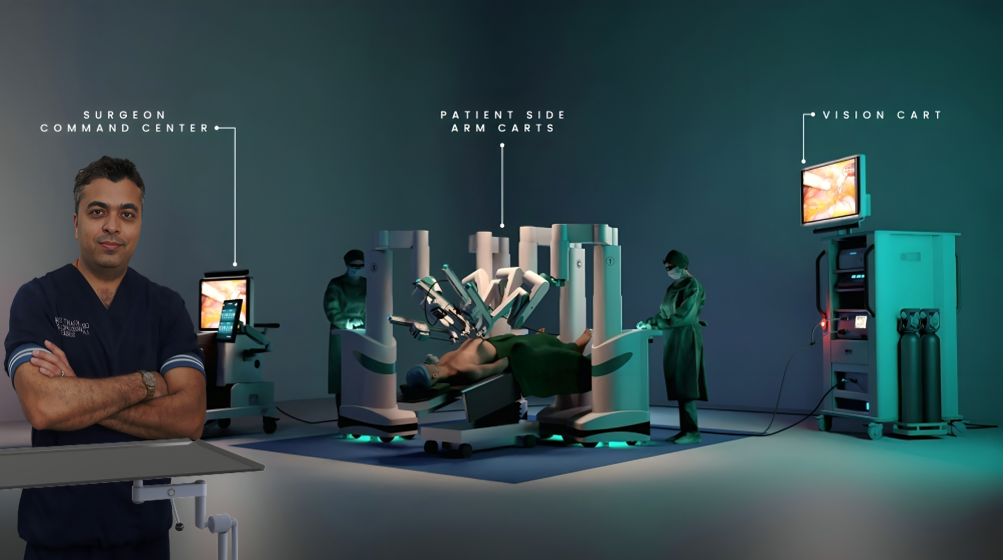Ventral hernias can be classified into several types, including umbilical hernias (around the belly button), epigastric hernias (above the belly button), and incisional hernias (at the site of a previous surgical incision). Inguinal hernias occur in the groin area and can be direct or indirect.
Robot-assisted hernia surgery may be indicated for complex or recurrent hernias, as well as for patients who prefer minimally invasive approaches. It offers advantages such as improved visualization, precision, and potentially faster recovery times compared to traditional open surgery.

Robot-assisted hernia repair typically involves a few key steps:
1. Patient Preparation: The patient is positioned on the operating table, and anesthesia is administered.
2. Trocar Placement: Small incisions are made near the hernia site, through which trocars (thin tubes) are inserted into the abdomen. These serve as entry points for the robotic arms and camera.
3. Robotic Arm Setup: Surgical instruments and a high-definition camera are attached to robotic arms, which are then positioned through the trocars inside the abdomen.
4. Visualization: The camera provides a magnified, 3D view of the surgical site, allowing the surgeon to see clearly.
5. Hernia Repair: Using the robotic arms, the surgeon manipulates specialized instruments to dissect and repair the hernia defect. This may involve closing the defect with sutures or using mesh to reinforce the area.
6. Closure: Once the repair is complete, the instruments are removed, and the incisions are closed with sutures or surgical glue.
Throughout the procedure, the surgeon controls the robotic arms from a console, manipulating the instruments with precision and dexterity. This minimally invasive approach typically results in smaller incisions, reduced pain, and quicker recovery times compared to traditional open surgery.
Robot-assisted hernia surgery offers several advantages that may make it an attractive option for some patients:
1. Precision and Dexterity: The robotic system provides the surgeon with enhanced dexterity and control, allowing for precise movements in tight spaces. This can result in more accurate repairs, especially for complex or recurrent hernias.
2. Minimally Invasive: Robot-assisted surgery is minimally invasive, meaning it requires only small incisions. This can lead to less pain, reduced scarring, and faster recovery times compared to traditional open surgery.
3. Enhanced Visualization: The high-definition camera provides a magnified, 3D view of the surgical site, allowing for better visualization of the anatomy. This can help the surgeon identify and repair the hernia more effectively.
4. Reduced Risk of Complications: Minimally invasive techniques like robot-assisted surgery are associated with lower rates of complications such as infection and hernia recurrence compared to open surgery.
5. Shorter Hospital Stay: Patients undergoing robot-assisted hernia surgery often experience shorter hospital stays and faster return to normal activities compared to those undergoing open surgery.
6. Patient Preference: Some patients prefer robot-assisted surgery due to its perceived advantages in terms of precision, minimally invasive nature, and quicker recovery.
Overall, robot-assisted hernia surgery can be a valuable option for patients seeking a minimally invasive approach with the potential for improved outcomes and faster recovery.
